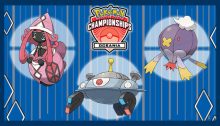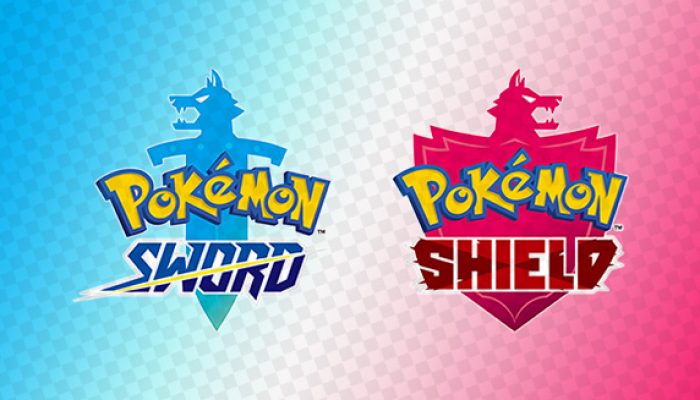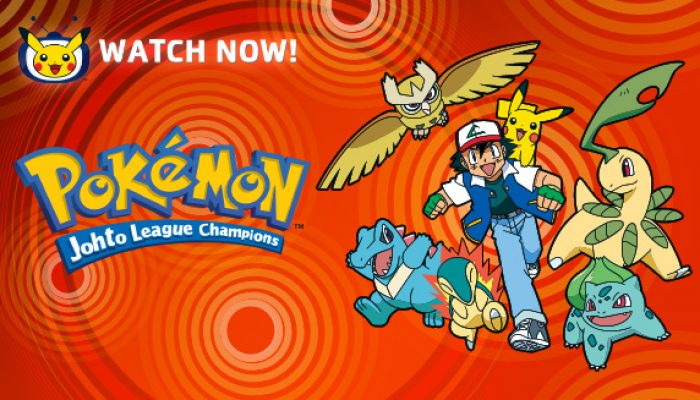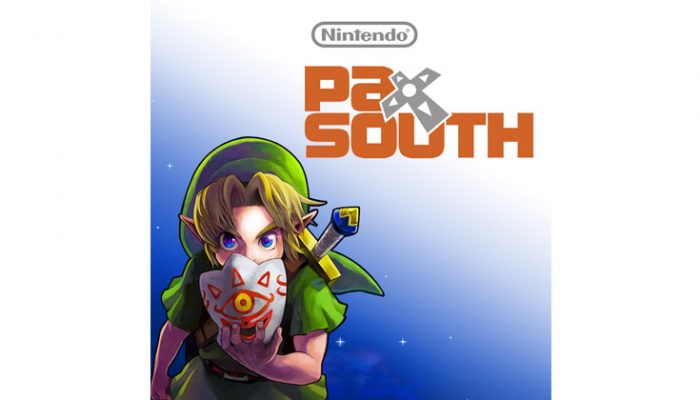 How Arcanine became top-tier.
How Arcanine became top-tier.
☆ NintendObs Weekly – Monday, March 27, 2017 – Sunday, April 2, 2017.
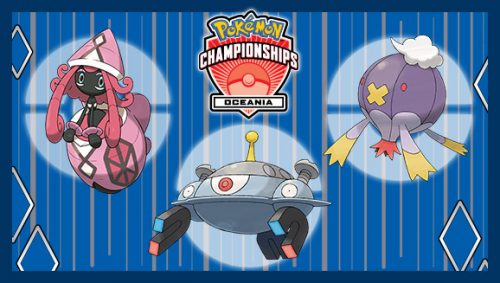
Video Game Championships Mayhem in Melbourne
The Oceania International Championships in Melbourne, Australia, marked the second of four International Championships in the 2017 Pokémon Championship Series. Top players from across the globe flew down under to take on competitors from the Oceania Rating Zone for huge cash prizes—and enough Championship Points to qualify for the 2017 Pokémon World Championships in one fell swoop.
The Oceania International Championships was the largest Pokémon tournament ever held in Australia, and the talented field made it one of the most challenging, too. The strategic acumen on display expanded significantly beyond December’s European International Championships, showing how far players have come in a few months. Under the hot sun in Melbourne, we got a clearer view of which Pokémon are truly top performers at this point in the season and which ones fell short as players honed their strategies.
Congratulations to Masters Division Champion Zoe Lou, Senior Division Champion Carson St. Denis, and Junior Division Champion Nicholas Kan. Read on for more about what happened in the Masters Division finals and the impact we expect it to have on strategies in future tournaments.
Tournament Tales
The desire to become Oceania International Champion burned strong for 272 Masters Division competitors, but only one could come out on top. Beyond the title of Champion and the prize money that came with it, Trainers were battling for the largest pool of Championship Points available in the Oceania Rating Zone. And many local Trainers set out to prove their region was just as strong as traditionally top-performing nations in the Video Game Championships like Italy, South Korea, Japan, and the United States.
Trainers began by battling through nine Swiss rounds, narrowing the field to the 32 competitors who would move on to Day 2. Many top players missed out on the first cut, including 2015 World Champion Shoma Honami (Japan), 2013 Worlds semifinalist Aaron Zheng (United States), and Sam Pandelis (Australia’s top player at the 2016 World Championships). The Trainers who advanced in their stead included four of the top-8 players from the European International Championships, as well as 2016 World Champion Wolfe Glick. Seven of the players who moved on were from Australia, five from the United States, four from the UK, and two each from Argentina, Germany, Italy, Japan, and Spain.
The surviving players had five more rounds to play on Saturday, with the top eight Trainers moving on to Sunday’s top cut bracket. An 11-3 record would guarantee advancement, but it was possible one player could move on with 10 wins and four losses. Tournament hopes looked bleak for the hosts after Saturday’s matches. All seven of the Australian players who made it to Day 2 had racked up three or more losses. But then the Aussies rallied, and both Luke Curtale and Zoe Lou moved on to represent the host nation on Sunday. Sebastian Escalante, Latin America’s Championship Points leader, finished Day 2 as the top player. Unfortunately, he had to return home after Saturday’s play and was unable to compete in his top-8 match. He’ll be a Trainer to watch in the remaining international competitions.
After Germany’s Baris Akcos and Americans Tommy Cooleen and Nick Navarre were defeated in the top-8, the semifinals featured a pair of showdowns between Europe and Australia. Nico Davide Cognetta, the runner-up in London, made his second consecutive finals by defeating Luke Curtale on one side of the bracket. On the other side, Zoe Lou and London International semifinalist Ben Kyriakou matched up for the third time in the tournament, after Ben won each of the previous sets 2-1. This time, Zoe came out on top with one of the most commanding performances we’ve seen in a top-cut match. Nico put up an admirable fight in the finals, but Zoe was simply unstoppable. She won the Oceania International Championships soundly, keeping the trophy home in Australia.
From London to Melbourne
Thanks to the increased stakes in prize money and Championship Points, the Oceania International Championships brought out some great strategies. The teams used in Melbourne reflected recent Regional Championships much more closely than they did December’s European International Championships.
Arcanine was already one of the most frequently selected Pokémon in the Video Game Championships in London because of its Intimidate Ability, but in Melbourne it solidified its position as top dog, appearing on an incredible 75% of both top-32 and top-8 Masters Division teams. The Attack-reducing effect of Intimidate is so powerful that players try to incorporate it into teams for any VGC format that allows it, and Arcanine has become the default choice for Trainers seeking the powerful Ability. With the popular Tapu Koko troubling Gyarados, and so many Pokémon making quick work of Salamence, expect to see plenty of Arcanine throughout this season’s remaining events.
The fall of Alolan Marowak is another reason so many Trainers looked to Arcanine instead of Gyarados for the Intimidate Ability. Marowak was one of the most popular Pokémon early in the season because its Lightning Rod Ability could protect teammates from Electric-type attacks, and the Bone Keeper Pokémon could dish out significant damage on Tapu Koko, Tapu Bulu, and Celesteela. Trends in strategy have since forced out Alolan Marowak—it’s an incredibly difficult Pokémon to use successfully in a format where Tapu Fini and Garchomp have solidified themselves as top-tier threats. Marowak’s popularity was further diminished because it’s used almost exclusively in conjunction with Gyarados, which requires a greater investment for Intimidate than does Arcanine.
Trainers who competed in London probably would have been surprised to find Celesteela relegated to a non-factor in just four months. Immediately following the release of Pokémon Sun and Pokémon Moon, Celesteela seemed like it was an immovable defensive force that might be the best Pokémon available for the 2017 season. But Trainers got sick of being stalled out by Celesteela’s Leech Seed and adjusted their strategies in response. We saw many teams combine Arcanine and Tapu Koko to limit Celesteela’s effectiveness near the end of the calendar year, and now Trainers seem to have almost given up on it entirely in favor of more offensively inclined alternatives.
Most shocking in comparison to recent Regional Championships was Araquanid’s lack of presence in Melbourne. The combination of Porygon2’s Trick Room and Araquanid’s incredible power had done well around the world, and even helped to win all but one Masters Division Regional Championship in North America. But Trainers opted to go a different route for the Oceania International Championships. Only one Araquanid even made it to Day 2, despite it seeming like one of the safest bets to make an impact in Melbourne. It’s tough to doubt the Water Bubble Pokémon’s strength based on other tournament results, but this could be a worrying trend for Araquanid fans moving forward.
Hot Trends
Several key decisions made by top performers in Melbourne will likely inspire other Trainers as we move forward. Keep an eye on these Pokémon—and the Pokémon that could beat them—as the season continues.
We mentioned Arcanine before, but Intimidate is so vital that it deserves further discussion. Six of the top eight players in the Masters Division used Arcanine, and four got Intimidate from Gyarados. Three players brought both Pokémon—each possessing the Intimidate Ability. There were few consistent ways to capitalize on opposing Intimidates this season, but perhaps we’ll see more Trainers elect to use Braviary with the Defiant Ability, train Milotic with the Competitive Ability, or give their Pokémon an Adrenaline Orb in response.
Easily the strangest solution to Intimidate we’ve seen in the Video Game Championships is having Kartana hold Scope Lens to score more frequent critical hits, which ignore reduced Attack stat levels. Perhaps the most visible proponent of this trend is Nick Navarre, now soundly the North American Championship Points leader. Trainers normally don’t find the means of increasing a Pokémon’s critical hit rate to be significant enough to justify a held item, but Kartana is an interesting exception. Because Kartana’s key Leaf Blade move already has an increased critical hit rate, Scope Lens brings its chance up to 50%. This Kartana is weak on defense without the more popular Focus Sash or Assault Vest, but Nick and other Trainers have proven its effectiveness.
Without a defensive item, however, Kartana’s poor HP and Special Defense are much more exploitable. Champion Zoe Lou taught her Gyarados Flamethrower, which does more than enough damage to knock out a Kartana with Scope Lens, despite Gyarados’s equally disappointing Special Attack stat. If Scope Lens Kartana continues to be a trend, look for Trainers to punish it by teaching more Pokémon Fire-type moves and seeking out Pokémon that can use a Fire-type Hidden Power. Using Tapu Koko with Hidden Power was already a trend earlier in the season, and it’s a prime candidate to outpace and knock out Scope Lens Kartana if Kartana’s popularity endures.
One of the most interesting innovations we saw from the top-8 teams was Tommy Cooleen’s Pelipper, which knew Brine instead of the more popular Scald. Pelipper’s damage output is normally modest, so the Water Bird Pokémon typically serves a supportive role on Rain teams in the 2017 format by providing the Drizzle Ability and increasing its team’s Speed with Tailwind. Tommy found a way to increase Pelipper’s offensive contributions by teaching it Brine, a move that has double power when its foe’s remaining health is below 50%. Brine allowed Pelipper to more easily secure knock outs after its quicker teammates weakened opponents, often preventing incoming damage while Tailwind was active.
Reigning World Champion Wolfe Glick finished 9th using an interesting team similar to one we saw from Albert Bos and Alex Gomez at the Sheffield Regional Championships. Wolfe’s team was a little different from that of the two Spaniards, but all three combined Tapu Bulu, a Nihilego holding Grassy Seed, Arcanine, and Porygon2. Aided by varying combinations of the Grassy Terrain created by Tapu Bulu’s Grassy Surge, increased Defense from Grassy Seed, and Arcanine’s Intimidate Ability, Nihilego can survive an Earthquake or two in most situations despite its type disadvantage and weak Defense. This strategy causes significant trouble for teams that rely on knocking out Nihilego with Ground-type attacks if they fail to bring it to the core of the Earth using the Tectonic Rage Z-Move.
The Magnezone used by finalist Zoe Lou showed another way of exploiting Trainers’ reliance on Ground-type attacks, as well as an evolution of the role played by an interesting Pokémon in the 2017 VGC format. Early in the season, we usually saw Magnezone with the Magnet Pull Ability intended to trap and knock out the Steel- and Flying-type Celesteela. But Zoe’s Shoma Honami-inspired Magnezone is a massive shift in strategy. In addition to swapping out the Magnet Pull Ability for the more defensive Sturdy, Zoe’s Magnezone knew Magnet Rise and held Electrium Z. That resulted in a difficult Pokémon to knock out that could still deal massive damage. Magnet Rise enabled Zoe to exploit opponents who tried to switch their Garchomp into expected Thunderbolts or break through Sturdy with Marowak’s Bonemerang, allowing Magnezone to hang with its supposed counters.
Parting Shots
- Sebastian Escalante’s Persian was one of the first to cut a major event, and he was one of the first Trainers we’ve seen use it other than Markus Stadter. It helped its team with Fake Out and some literal Parting Shots, including the Z-Move Parting Shot, which fully heals the incoming Pokémon. Luke Curtale combined a Tapu Fini that knew Heal Pulse and Swagger with several physical attackers, including a Porygon2 that knew Frustration, a combination first seen from Wolfe Glick.
Drifblim has risen in popularity because of the combination of Tailwind, the Unburden Ability, and Misty or Psychic Seed. As a member of Zoe’s winning team, it seems to be solidified as the major alternative to Porygon2 for speed control.
Congratulations again to all players who took home Championship Points and prizes. The next International Championships is the Latin American International Championships in Sao Paolo, Brazil, from April 21–23, 2017. You can also find tournaments near you in the Event Finder. And don’t forget to check out Pokemon.com/Strategy for more Pokémon video game and TCG strategy and tournament analysis.
Source: Pokémon.
At NintendObserver, the comments are on Discord.
Click on Community to learn more. 🙂
…
And if you’ve already got yours, click on Pokémon Sun & Moon for everything you need to know about the games. 😀
